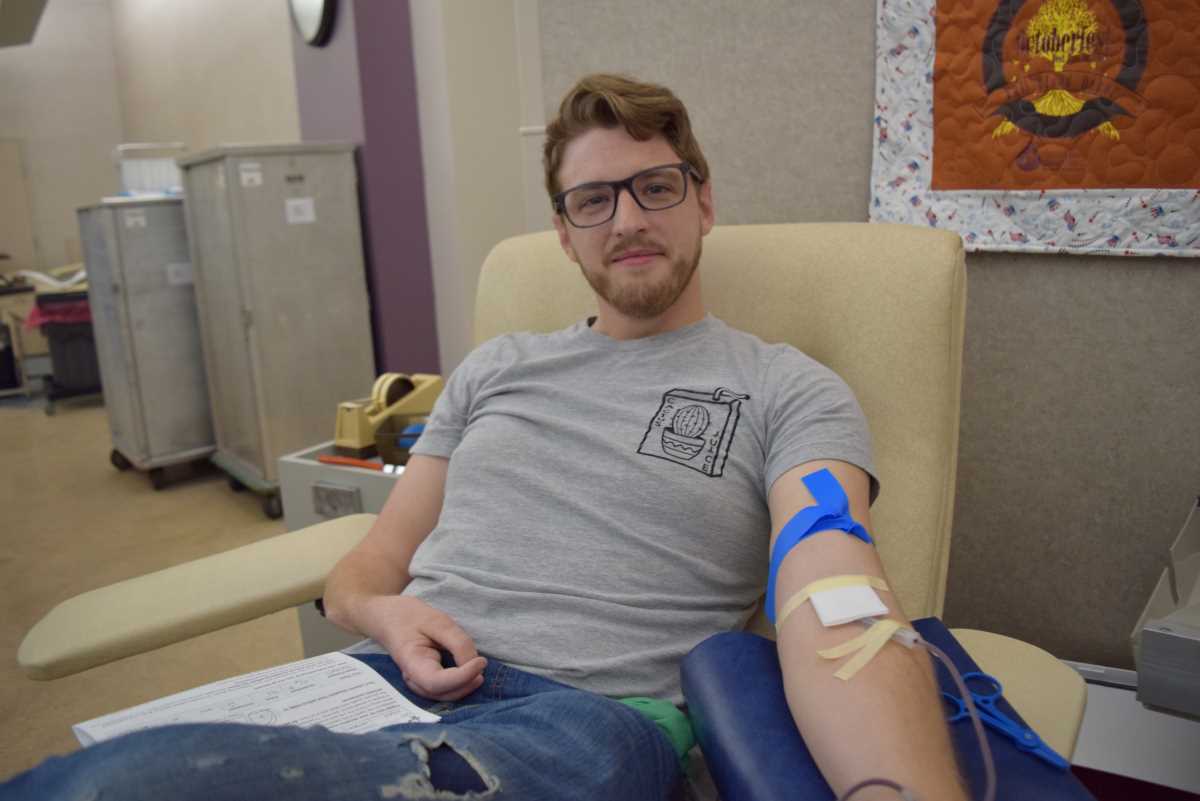
January Blood Donor Awareness Month Profile
DAYTON, Ohio – A tragic accident in childhood is never out of mind for Fairborn donor Tony Mantia. A handshake with a stranger can be an awkward reminder. He focuses instead on how a life-altering injury became an affirmation of why he is a blood donor.
“I said I need to give back somehow, and I’ll keep giving blood because that’s what I can do,” Tony said. “I want to give back because someone made this exact decision 20 years ago.”
Tony is a Wright State University graduate who works as software trainer at Reynolds & Reynolds and donates with Community Blood Center. He grew up in Canal Winchester, southeast of Columbus. A mower accident at age seven helped shape the man he is today.
“You’re a kid, from a country family, living on a farm,” he said. “I was sitting on top, straddling the top. My sister was on it with me, riding around like we had dozens of times. One day, hit a bad bump and went over the mower, fell over the front and the mower went over the arm.
“The ambulance showed up. I don’t have a ton of memories from that day. But I remember on the ambulance ride the guy was really nice. I went into shock because of the pain and passed out.”
Multiple transfusions bought time as doctors worked to save his arm.
“Several. It was an excessive amount because half my arm was missing,” he said. “They wanted to cut my arm off and cauterize it to stop the bleeding. My parents said, ‘No. Keep the arm and keep giving him blood.’ I was grateful for that because I still have use of that arm.”
Tony spent weeks in the hospital undergoing skin graft surgeries. He remembers the kindness of a nurse who made a special trip to get him a mushroom pizza.
His dad encouraged him to start a lawn mower business in high school, “as a redemption story,” he said. “It was harder on him then it was on me. He said this would be cool way to turn this thing meant for evil for good.
“It was an opportunity to take something and make it right – that took my arm from me and turn it into something good.”
He first donated at his high school in Lancaster and learned his AB-negative is rare, represented by less than one percent of the population. Because of donors, enough was on hand that day when his need was great.
“People always say, ‘Don’t sweat the small stuff,’” said Tony. “But it’s the little things in life that keep the darkness at bay.
“When I donate, I think about a little kid out there that needs blood. That kid in the ambulance that needed a teddy bear. My donating is in reaction to that kindness. It’s not the big things, it’s the little things that matter.”
National Blood Donor Awareness Month was proclaimed in 1969 to thank donors and encourage more donations during the winter months when the holidays, severe weather and seasonal illness make it difficult to maintain a sufficient blood supply.
State Sen. Stephen Huffman (R-5th District), an emergency room physician and a life-long blood donor, introduced legislation in 2017 to designate January as Blood Donor Awareness Month in Ohio. It became law in February 2018 and was first celebrated in January 2019.
Blood donation requirements: Donors are required to provide a photo ID that includes their full name. Past CBC donors are also asked to bring their CBC donor ID card. Donors must be at least 17 years of age (16 years old with parental consent: form available at www.givingblood.org or at the Dayton CBC and mobile blood drive locations), weigh a minimum of 110 pounds (you may have to weigh more depending on your height), and be in good physical health. The Food and Drug Administration (FDA) changes blood donor eligibility guidelines periodically. Individuals with eligibility questions can email canidonate@cbccts.org or call (937) 461-3220. Make an appointment at www.DonorTime.com.
Community Blood Center/Community Tissue Services® is an independent, not-for-profit organization. Community Blood Center provides blood products to partner hospitals and health centers within its 18-county service area of western Ohio and eastern Indiana and to select hospitals and blood centers outside the region. For more information visit www.givingblood.org.

